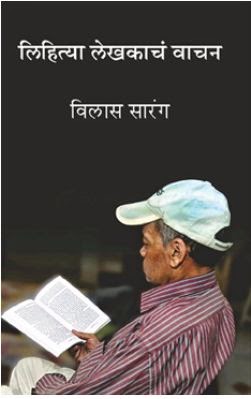88th edition of
All-India Marathi Literary Conference (अखिल
भारतीय मराठी
साहित्य संमेलन)
starts today April 3 2015
श्रीपाद कृष्ण कोल्हटकर, 'चोरांचे संमेलन', 'सुदाम्याचे पोहे', (essays written from late 19th century to 1923):
"…या चळवळींना
अलीकडे इतका उत येण्याचे कारण
काय? आमचा
लोकांच्या मनात दिवसेंदिवस जुटीचे खरे महत्व चांगल्या
रीतीने बिंबू
लागले आहे
की
काय ? किंवा आमची वृत्ती उस्सवप्रिय
आणि या
सभाही उस्सवांच्याच
नमुन्यावर होत असल्यामुळे आम्ही
त्याकडे वारंवार
आकर्षिले जात आहोत अथवा आमच्यातील तीर्थाटनेच्छू
किंवा नावीन्यप्रिय
मंडळींना आपली
तलफ या
सभांच्या निमित्ताने
पुरी करता
येत असल्यामुळे
त्यांना इतकी
गर्दी जमत
असते अगर
निरुद्योगी माणसांना आपला अमोलिक (म्हणजे
ज्यांचे मोल
कवडीच्याही किमतीचे नसते!) वेळ दवडण्याला
या सभा
उत्कृष्ट साधने
असल्यामुळे त्यांच्या कडे इतका समूह
लोटत असतो? या सभांपासून लभ्यांश पाहू गेले तर आगगाड्यांचे उत्पन्न अतोनात वाढण्यापलीकडे फारसा दिसणार नाही…"
"मराठी साहित्य संमेलनवाले
हे फुकट
द्या आणि
ते फुकट
द्या म्हणून
जी याचना
करतात, ही
बाब क्लेशदायक
आहे. त्यामुळे
ही फुकटेगिरी
पहिल्यांदा बंद करा, असा परखड
सल्ला राज्याचे
सांस्कृतिक कार्यमंत्री विनोद तावडे यांनी
दिला आहे..."
लोकसत्ता, March 25 2015:
"पंजाब येथील घुमान
येथे ३
ते ५
एप्रिल या
कालावधीत होणाऱ्या
८८ व्या
अखिल भारतीय
मराठी साहित्य
संमेलनात जेवण
आणि नाश्ता
यामध्ये खास
गोड पदार्थ
साहित्यप्रेमी आणि रसिकांना चाखायला मिळणार
आहेत. तीन
दिवसांच्या संमेलनात रवा आणि बेसन
लाडू, बालुशाही,
खोबरा पाक,
सोनपापडी, दुधी हलवा, मोहनथाळ, काजूकतली,
अशा गोड
पदार्थाची मेजवानी आहे. तसेच मधुमेहींसाठी
खास साखरविरहित
गोड पदार्थही
ठेवण्यात येणार
आहेत..."
लोकसत्ता, March 29 2015:
"सरकारचा निधी:नाटय़ परिषद उपाशी;
साहित्य महामंडळ तुपाशी!...राज्य सरकारने
जाहीर केलेला
निधी पदरामध्ये
पाडून घेण्यामध्ये
अखिल भारतीय
मराठी साहित्य
महामंडळाला यश आले आहे. तर,
नाटय़संमेलन होऊन दीड महिन्यांचा कालावधी
लोटूनही अखिल
भारतीय मराठी
नाटय़ परिषद
उपाशी राहिली
आहे..."
(The rest of this post has already appeared on this blog in the past.)
I have never understood why these conferences are held. But, as I have said elsewhere,
they always put together a great Marathi books exhibition on this occasion and
in the past I have been able to pick up some great books there.
What connects following Marathi authors- not listed in any order- of
20th century?
V K Rajwade, Bhalchandra Nemade, Sane Guruji, Bhau Padhye, C
V Joshi, Baburao Arnalkar, Vilas Sarang, D G Godse, Vasant Sarwate, Vijay
Tendulkar, Natyachhatakar Diwakar, G A Kulkarni, Arun Kolatkar, Dilip Chitre, B
S Mardhekar, M V Dhond, T S Shejwalkar, Vinda Karandikar, Balkavi, Keshavsut,
Jayant Narlikar, Laxmibai Tilak, Vinoba Bhave, Setu Madhavrao Pagdi, D B
Mokashi, Sadanand Rege, Ram Ganesh Gadkari, Namdeo Dhasal, Govindrao Tembe, C T
Khanolkar, S N Pendse, R V Dighe, Jaywant Dalvi, Prabodhankar Thackeray,
Mahatma Phule, Anil Awachat, Indira Sant, S D Phadnis, Sharad Joshi...
(वि का राजवाडे,
भालचंद्र नेमाडे,
साने गुरूजी,
भाऊ पाध्ये,
चिं. वि.
जोशी, बाबूराव
अर्नाळकर, विलास सारंग, द ग गोडसे, वसंत
सरवटे, विजय
तेंडुलकर, नाट्यछटाकार दिवाकर, जी ए कुलकर्णी, अरुण
कोलटकर, दिलीप
चित्रे, बा.
सी. मर्ढेकर,
म वा
धोंड, त्र्यं
शं शेजवलकर,
विंदा करंदीकर,
बालकवी, केशवसुत,
जयंत नारळीकर,
लक्ष्मीबाई टिळक, विनोबा भावे, सेतु
माधवराव पगडी,
दि. बा.
मोकाशी, सदानंद
रेगे, राम
गणेश गडकरी,
नामदेव ढसाळ,
गोविंदराव टेंबे, चिं त्र्यं खानोलकर,
श्री. ना.
पेंडसे, र.
वा. दिघे,
जयवंत दळवी,
प्रबोधनकार ठाकरे , महात्मा फुले, अनिल
अवचट, इंदिरा
संत, शि द फडणीस, शरद जोशी...)
They never became the president of All-India Marathi literary conference.
See
this for the list of those who did.

'I sometimes wonder who all this is really for.'
courtesy: The Spectator
p.s. Those present at the birth-day function above, of Emily turning 6, are not free-loaders. They will eat their cake but have bought a present. Still the question remains: what is stripper doing there?
p.s.
लोकसत्ता, April 5 2015: "…पत्रकार विमानाने आणि
साहित्यिक मात्र रेल्वेने,
या संयोजकांच्या
धोरणामुळे राज्यातील अनेक नामवंत साहित्यिक
घुमानला गेलेच
नसल्याचे आता
स्पष्ट झाले
आहे.
पत्रकारांच्या
हवाई प्रवासासाठी
तत्परतेने प्रायोजक शोधणाऱ्या संयोजकांनी हीच
तडफ साहित्यिकांसाठी
का दाखवली
नाही,
असा
प्रश्न उपस्थित
झाला आहे.…"
लोकसत्ता, April 5 2015: "साहित्य संमेलनाच्या आयोजनाच्या
संदर्भात बोलताना
आम्ही वाचूपण,
नाचूपण अशी
भूमिका संमेलनाध्यक्ष
डॉ.
सदानंद
मोरे यांनी
घेतली असली,
तरी या
संमेलनात नाचण्याचेच
काय,
वाचण्याचे
कामही राजकीय
नेत्यांकडेच असल्याचे दिसत असल्याची कडवट
प्रतिक्रिया आता संमेलन नगरीतून उमटत
आहे.
घुमान
साहित्य संमेलनाच्या
व्यासपीठाचा वापर राजकीय नेत्यांनी आपली
प्रतिमा उंचावण्यासाठी
करून घेतल्याचे
बोलले जात
असून,
त्याच्या
पुष्टय़र्थ उद्घाटन सोहळ्याच्या वेळी व्यासपीठावर
झालेली राजकारण्यांची
गर्दी,
त्यांची
राजकीय स्वरूपाची
भाषणे,
एवढेच
नव्हे तर
संमेलनस्थळी वाटण्यात आलेली महाराष्ट्राचे मुख्यमंत्री
देवेंद्र फडणवीस
यांच्या कामांची
पंजाबी कौतुकपुस्तिका
यांचे दाखले
दिले जात
आहेत..."













